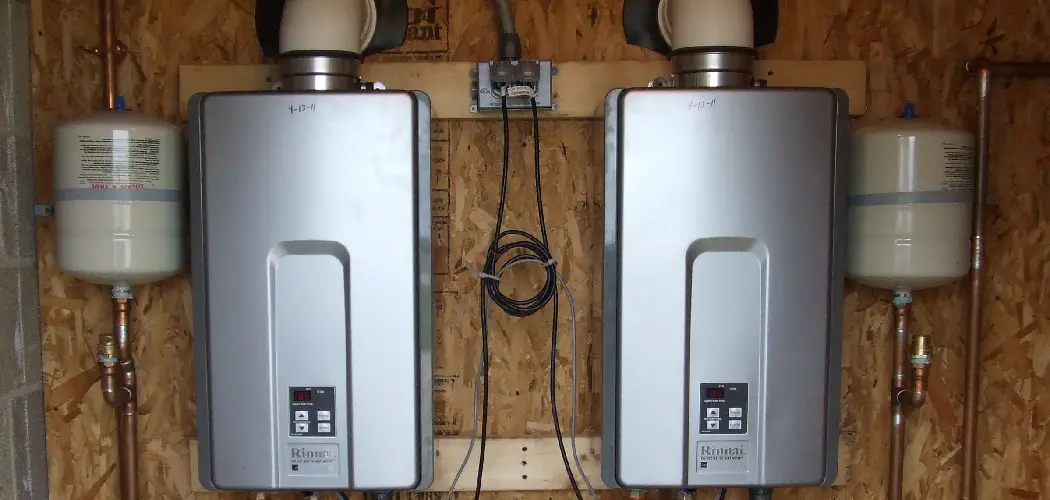Properly sizing your water heater is crucial to meeting your household’s demands, avoiding cold showers, and ensuring enough hot water for all your needs.
A correctly sized water heater provides comfort and helps reduce energy consumption, leading to lower utility bills and a smaller environmental footprint.
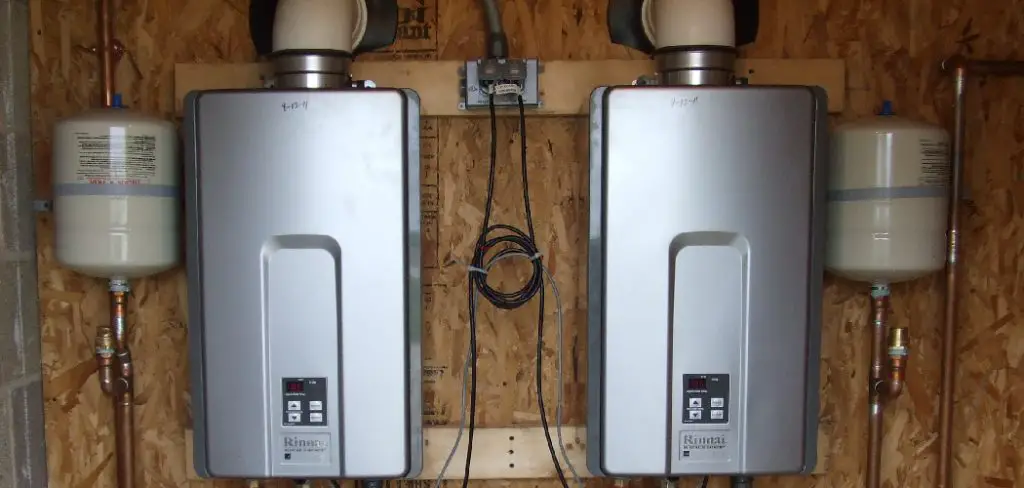
To provide a detailed, step-by-step process for determining the appropriate water heater size for your household needs, This guide will walk you through everything you need to know about how to determine water heater size. From understanding your household’s hot water usage patterns to selecting the right type of water heater, we aim to equip you with the knowledge to make an informed decision tailored to your specific requirements.
Understanding Water Heater Types
Storage (Tank) Water Heaters:
- Characteristics: Storage water heaters, commonly known as tank water heaters, store a large volume of heated water in an insulated tank. They maintain a constant supply of hot water ready for use at any time. These units typically range from 20 to 80 gallons, depending on the size needed.
- Pros and Cons: One significant advantage of storage water heaters is their lower initial cost compared to other types. They are relatively simple to install and can supply hot water to multiple fixtures simultaneously. However, they also have drawbacks, including energy wastage due to standby heat loss, as the heater must keep the water at a set temperature even when not in use. Additionally, once the stored hot water is depleted, the water is waiting to be reheated.
Tankless (On-Demand) Water Heaters:
- Characteristics: Tankless water heaters, also known as on-demand water heaters, heat water directly as it flows through the unit without storing any water internally. This type of heater provides a continuous supply of hot water as long as no concurrent high demands exceed its capacity.
- Pros and Cons: The main benefit of tankless water heaters is their energy efficiency, as they only heat water when it is needed, thus reducing wastage. They also tend to have a longer lifespan and take up less space compared to storage models. However, the initial cost is higher, and there may be limitations in supplying hot water to multiple outlets simultaneously.
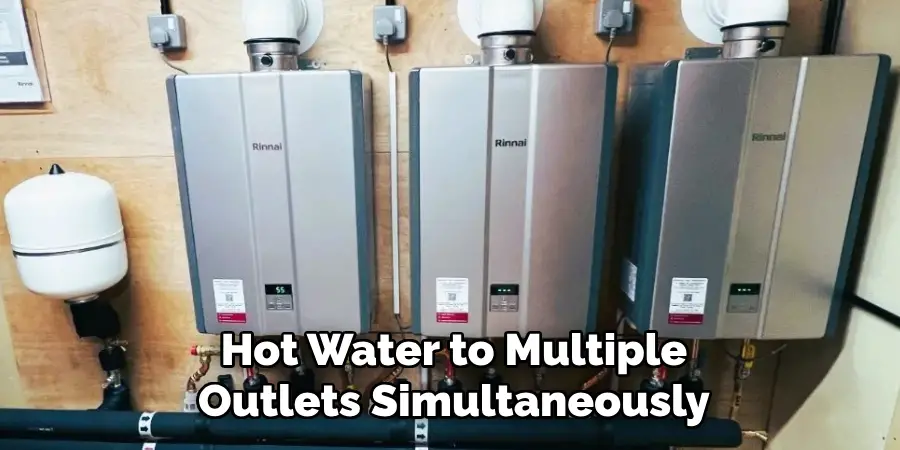
Heat Pump Water Heaters:
- Characteristics: Heat pump water heaters utilize electricity to transfer heat from the air or ground to heat water rather than generating heat directly. They function more like refrigerators in reverse, using ambient heat to warm the water stored in a tank.
- Pros and Cons: These heaters are known for their high efficiency, often using less than half the energy of conventional electric water heaters. However, they come with a higher upfront cost and more complex installation requirements. They also require additional space for adequate airflow and may not perform as efficiently in colder climates.
Solar Water Heaters:
- Characteristics: Solar water heaters harness energy from the sun through solar panels or collectors to heat water. The heated water is then stored in a tank for later use.
- Pros and Cons: The primary advantage of solar water heaters is their use of renewable energy, which can lead to significant savings on utility bills and a lower environmental impact. However, the effectiveness of these systems heavily depends on the weather and geographical location. Additionally, the initial setup cost is high, and a backup heating system may be necessary for cloudy days or increased demand.
How to Determine Water Heater Size: Key Factors in Sizing a Water Heater
1. Household Size and Usage:
- Number of Occupants:
The number of occupants in a household is a primary determinant of the size of the water heater required. More people generally equate to increased hot water demand. A small household with just two occupants may only need a 30-40 gallon storage water heater or a compact tankless unit. In contrast, a household with five or more individuals might require a water heater with a capacity of 50 gallons or more to ensure there is sufficient hot water during peak times.
- Hot Water Usage Patterns:
Understanding peak usage times and total daily hot water usage is crucial in sizing a water heater correctly. For example, if multiple family members typically shower in the morning, the water heater needs to be capable of handling several showers in quick succession. Additionally, the hot water usage of dishwashers or washing machines must also be factored in. Accurately assessing when and how much hot water is used in the home helps select a water heater that matches the household’s needs.
2. Hot Water Demand by Appliances:
- Showers and Bathtubs:
Showers and bathtubs are among the biggest consumers of hot water in any household. On average, a standard showerhead uses around 2 gallons of hot water per minute, while newer low-flow models use about 1.5 gallons per minute. Depending on size, bathtubs can be used significantly more, often requiring 20-30 gallons of hot water for a single fill. By calculating the average daily number of showers and baths, homeowners can estimate the necessary capacity for their water heater.
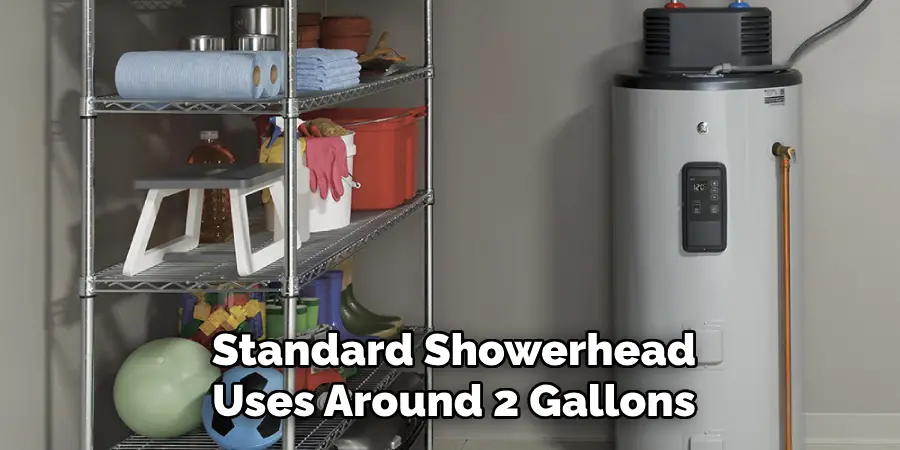
- Dishwashers and Washing Machines:
Dishwashers and washing machines contribute to the overall hot water usage as well. A modern dishwasher typically uses about 6-10 gallons of hot water per cycle, whereas washing machines can vary widely, using between 10-20 gallons per cycle, heavily depending on the settings used. Incorporating these appliances’ hot water needs into the overall calculation ensures the water heater can handle all household demands without strain.
3. Climate Considerations:
- Colder Climates:
In regions with colder climates, water heaters need to work harder to heat incoming cold water to the desired temperature, which often necessitates a larger capacity or a more powerful unit. Colder incoming water means that heaters must expend more energy and time to bring water up to temperature, making it crucial to choose a model with sufficient power to maintain efficiency and comfort.
- Warmer Climates:
Conversely, in warmer climates, the incoming water is naturally warmer, allowing for smaller capacity units to be used. These regions may not need as much energy to heat the water, making smaller or less powerful water heaters viable options without compromising on the availability or temperature of hot water.
4. Energy Efficiency:
- Energy Factor (EF) Rating:
The Energy Factor (EF) rating is an important measure of a water heater’s efficiency. A higher EF rating indicates a more efficient unit, which can translate to reduced energy consumption and lower utility bills over the appliance’s lifetime. When selecting a water heater, prioritizing models with higher EF ratings can offer significant long-term savings.
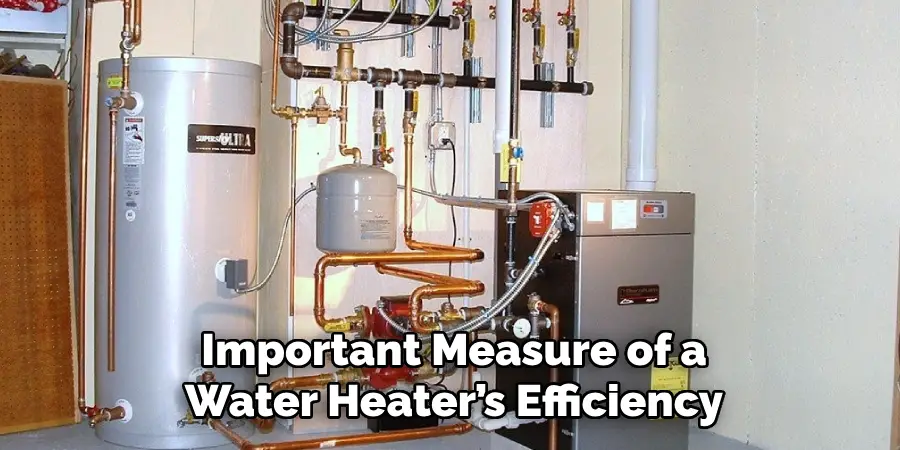
- Standby Heat Loss:
Standby heat loss refers to the energy wasted as stored hot water cools down while waiting to be used. This aspect is particularly relevant to storage water heaters, which must constantly reheat water to maintain a set temperature. Choosing models with good insulation or considering tankless options can minimize this loss, enhancing overall energy efficiency.
Calculating Required Capacity for Storage Water Heaters
First Hour Rating (FHR):
- Definition:
The First Hour Rating (FHR) measures the amount of hot water a storage water heater can supply within the first hour of operation. This rating is crucial as it indicates how well a unit can handle high demand over a short period, such as the busy morning hours when multiple showers and appliances may be in use simultaneously.
- Determining FHR:
To calculate the FHR needed for your household, you must first estimate the total hot water usage during the peak hour. This involves tallying up the hot water demand for all appliances and fixtures expected to be used concurrently. For instance, if three showers, a dishwasher, and a washing machine will be used within the same hour, you would combine the hot water usage of each to determine the required FHR. Each component’s usage can typically be found in the manufacturer’s specifications or by using average estimates.
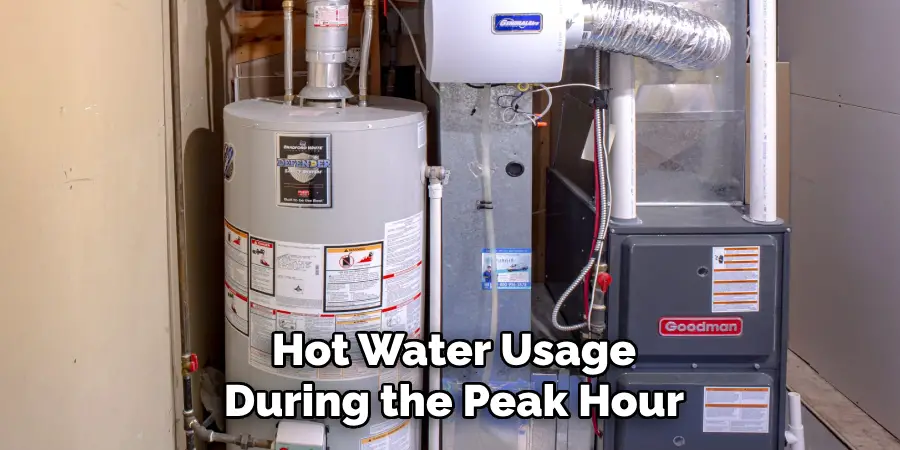
Peak Hour Demand:
- Identifying Peak Usage:
Identifying peak hour hot water demand involves mapping out when your household uses the most hot water and which appliances or fixtures contribute to that usage. For most families, this peak time is during the morning when people are getting ready for the day. Start by listing all activities requiring hot water during this period and noting how long each activity lasts and how much water it uses.
- Matching FHR with Demand:
Once you have identified your peak hour demand, ensure the water heater you select has an FHR that meets or exceeds this demand. For example, if your peak hour demand is 50 gallons, you need a water heater with an FHR of at least 50 gallons. Choosing a water heater with an appropriate FHR ensures that you will have sufficient hot water even during the busiest times.
Typical Sizing Guidelines:
- 1-2 People:
For households with one to two occupants, a storage water heater with a capacity of 30-40 gallons is typically sufficient. Smaller households have less frequent instances of simultaneous hot water usage, which means a lower demand during peak hours.
- 3-4 People:
In a household with three to four people, it is recommended to have a storage water heater with a capacity of 40-50 gallons. This size accommodates multiple showers and the use of other appliances, ensuring there is enough hot water for everyone.
- 5+ People:
Larger households with five or more occupants require a water heater with a capacity of at least 50 gallons or more. Given the higher number of people and potential hot water usage scenarios, these households need a larger tank to ensure a steady hot water supply during peak periods.
By understanding and correctly calculating the FHR and peak hour demand, homeowners can select a storage water heater that not only meets their needs but also operates efficiently, providing reliable hot water without unnecessary energy consumption.
Sizing Tankless Water Heaters
Flow Rate:
- Gallons Per Minute (GPM):
The flow rate of a tankless water heater is measured in Gallons Per Minute (GPM), which indicates the amount of hot water the unit can produce continuously at a given time. Understanding GPM is crucial because it helps determine whether a tankless water heater can meet the simultaneous hot water demands of various fixtures and appliances in your home. A higher GPM indicates a greater capacity to supply hot water to multiple outlets.

- Calculating Total GPM:
To calculate the total GPM requirements for your household, you need to add up the GPM of all the fixtures and appliances that will be used simultaneously. For example, a showerhead may use 2.5 GPM, a kitchen faucet 1.5 GPM, and a washing machine 2.0 GPM. If all these fixtures are expected to be in use simultaneously, the total GPM required would be 2.5 + 1.5 + 2.0 = 6.0 GPM. Knowing this total helps ensure you select a tankless water heater that can provide adequate hot water for all your needs without interruption.
Temperature Rise:
- Definition:
Temperature rise refers to the difference between the incoming cold water temperature and the desired hot water output temperature. This factor is critical because it determines how hard the tankless water heater needs to work to heat the water to the required temperature. The greater the temperature rise needed, the more powerful the unit must be to produce hot water at the desired temperature.
- Calculating Temperature Rise:
First, determine the average incoming water temperature to calculate the required temperature rise, which can vary significantly depending on your climate and the season. Next, decide on the desired output temperature, typically around 120°F for most household uses. Subtract the incoming water temperature from the desired output temperature to find the required temperature rise. For instance, if the incoming water temperature is 50°F and you want the output to be 120°F, the temperature rise needed is 120°F – 50°F = 70°F.
Choosing the Right Unit:
- Matching GPM and Temperature Rise:
Once you have determined your household’s total GPM requirement and the necessary temperature rise, you can begin evaluating tankless water heater models. Choosing a unit that can handle both the flow rate and the temperature rise simultaneously is essential. Manufacturers often provide specifications indicating the maximum GPM the unit can supply at various temperature rises. Ensure that the selected model meets or exceeds your calculated needs to guarantee a consistent hot water supply.
- Typical Sizing Examples:
For a small household with one to two occupants and moderate usage, a tankless water heater with a capacity of around 3-4 GPM at a 70°F temperature rise might suffice. For a medium-sized household with three to four people, a unit delivering 6-7 GPM at the same temperature rise is preferable to accommodate the simultaneous use of multiple fixtures. Larger households with five or more people might require a high-capacity unit capable of delivering 8+ GPM at a 70°F temperature rise, especially if many hot water outlets will be in use concurrently.
By accurately calculating the GPM and temperature rise requirements and then matching these with the specifications of tankless water heaters, homeowners can ensure they select a unit that provides a seamless hot water supply while operating efficiently.
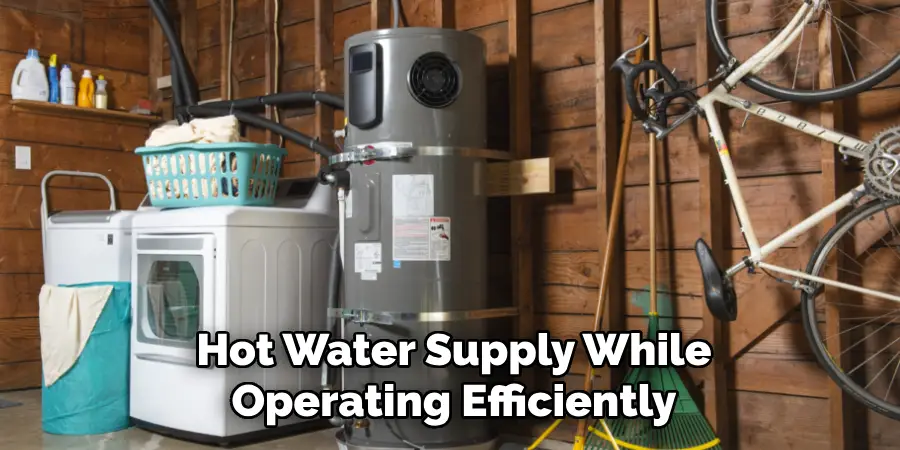
Special Considerations for Heat Pump and Solar Water Heaters
Heat Pump Water Heaters:
- Sizing Similarities to Storage Heaters:
Sizing a heat pump water heater is generally similar to sizing a traditional storage water heater, as both types are meant to store hot water for use throughout the day. The peak hour demand and First Hour Rating (FHR) are still critical metrics to consider. For example, a heat pump water heater suitable for a household with three to four occupants would have a similar capacity, around 40-50 gallons, just like a conventional storage water heater. The key difference lies in the efficiency and method of heating the water rather than the storage capacity itself.
- Additional Space Requirements:
One of the unique aspects of heat pump water heaters is their requirement for additional space around the unit. These heaters extract heat from the ambient air, meaning they need adequate airflow to operate efficiently. This often translates to needing larger installation areas, typically a room with at least 1,000 cubic feet of air space or an area that can be ducted to provide sufficient airflow. Proper placement is crucial to optimize their performance and energy efficiency.
Solar Water Heaters:
- Solar Collectors and Storage Tank Size:
For solar water heaters, the size of the solar collectors and the storage tank must be matched carefully to the household’s hot water needs. The number and area of solar collectors are usually calculated based on the available sunlight and the estimated daily hot water usage. A typical guideline is to have about 20 square feet of collector area for each person in the home. The storage tank size should also reflect the household size and the hot water usage patterns, ensuring sufficient capacity to store heated water for periods when sunlight is unavailable.
- Supplemental Heating Needs:
While solar water heaters are efficient and environmentally friendly, they often require a supplemental heating source to ensure a consistent hot water supply during cloudy days or periods of high demand. Common backup options include electric or gas-fired water heaters, which can activate automatically when the solar system cannot meet 100% of the household’s hot water needs. Ensuring a reliable backup system is crucial for maintaining a hot water supply regardless of weather conditions, thereby maximizing the effectiveness and convenience of solar water heating systems.

Conclusion
Determining the appropriate water heater size involves several crucial steps and considerations. First, evaluate daily usage by assessing the number of occupants and their hot water consumption patterns. Second, determine the First Hour Rating (FHR) for storage water heaters or the flow rate for tankless models to meet peak-hour demands. Lastly, consult online resources, manufacturer guidelines, and professional installers to ensure a suitable and efficient choice.
Properly sizing a water heater is essential for maximizing efficiency and comfort. A correctly sized unit ensures an adequate hot water supply without overburdening the system, leading to energy savings and extended appliance lifespan.
Regular maintenance and monitoring are key to sustaining your water heater’s optimal performance. By understanding how to determine water heater size and adhering to the recommended upkeep practices, homeowners can enjoy consistent hot water availability and enhanced system longevity.

